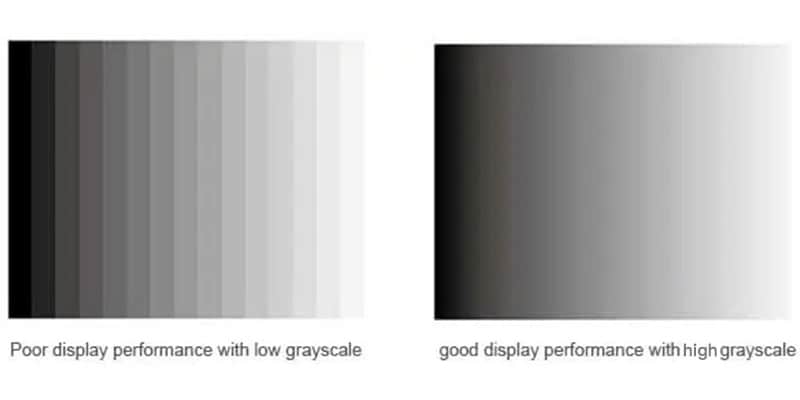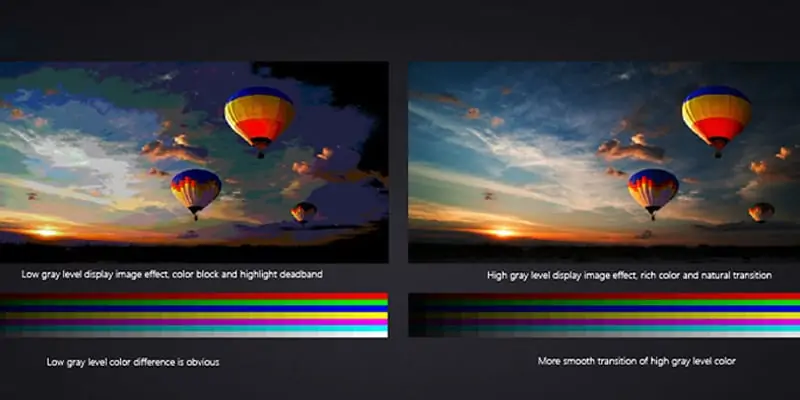Do you have a flexible LED display screen or are you planning to invest in one for indoor/outdoor usage? If so, you must be interested in learning everything about LED display screens and how they work, right? Now, most of the information on these screens are commonly known and familiar by everyone. However, when it comes to understanding the advanced ideas of LED display screens, there’s a lot that might not be familiar to everyone.
From the Nits
Now for everyone who isn’t well aware of what LED display grayscale is and how it works, let’s just go ahead and discover it below in detail.
What is Grayscale?
Now for a better understanding of LED display grayscale, let’s first learn what grayscale is in terms of color science. So it is considered as a range of grey shades that don’t have any apparent color in them. In these shades, the darkest color is black; which does not have any reflected light in the color. Whereas, the lightest shade in this is the white color. This shade has the complete transmission of light with the presence of all the visible wavelengths.
Grayscale is the grayscale refers to how many shades a color can have from light to dark. For display technology using data, grayscale is the determining factor in the number of colors displayed. In general, the higher the gray level, the richer the displayed color, the finer the picture, and the more detailed the details.
Now, the gray level depends mainly on the number of digital-to-analog conversions of the system. Of course, the system’s video processing chip, memory and transmission system must provide support for the corresponding number of bits. At present, led display mainly adopts:
1. 8-bit processing system, that is 256 (2 8th power) level gray, there are 256 brightness changes from black to white.
2. 10-bit processing system, that is 1024 (2 10th power) level gray, there are 1024 brightness changes from black to white.
3. 12-bit processing system, that is 4096 (2 12th power) level gray, there are 4096 brightness changes from black to white.

This is all to the basics of what grayscale is in terms of basics color sense. However, when it comes to understanding the idea of grayscale for LED display screens, then it mainly involves the usage of grayscale in the screens graphical display. For a clearer view, let’s go ahead and discuss it further.
Grayscale of LED Display
If we talk generally about the LED display grayscale, then it can be said that when a grayscale bit gets higher, then the content quality of the LED display screen also gets richer and a lot more vivid. For instance, in the comparison between 14 bit and 16 bit, 16 is considered to give your LED display a far better quality.
However, this doesn’t mean that only the presence of a higher grayscale can increase the quality of your LED displays content. This is mainly because the grayscale level also depends on the overall digital-to-analog conversion system of the LED display. This includes the compatibility of the system’s video processing chip, the memory, and the transmission system. If all these parts of an LED system support the higher bits of grayscale, then the larger grayscale level can work in enhancing the overall content quality of your LED display. Altogether, we can say that all of the components go hand in hand in terms of increasing the richness of the screen.
Levels of Grayscale
Now that we’ve discussed how the system of a LED display needs to be compatible with the higher levels of grayscale, it’s highly important to understand what levels are supported with that kind of display screens. So let’s discuss the two different types of LED display grayscale below.

Most of the outdoor and indoor are suitable with a 13bit grayscale. Here, you can especially consider the LED screens that don’t show too much of the gradient images. So, for these types of indoor/outdoor screens, a 13bit grayscale system would showcase a really pleasant and effective display on the screen.
In other cases, if we talk about other LED display screens that need to show many gradient images, then it would require a higher grayscale. For a clearer view, the presence of at least 14-16 bit or higher would be needed to show a rich display on the screen.
Conclusion
So this is all to the detailed understanding of LED display grayscale and how it works in improving the different types of LED display screens content quality. Hence, if you consider this grayscale level understanding and it’s working criteria, you’ll surely be able to get a better-LED display that fits your content quantity and quality needs.
